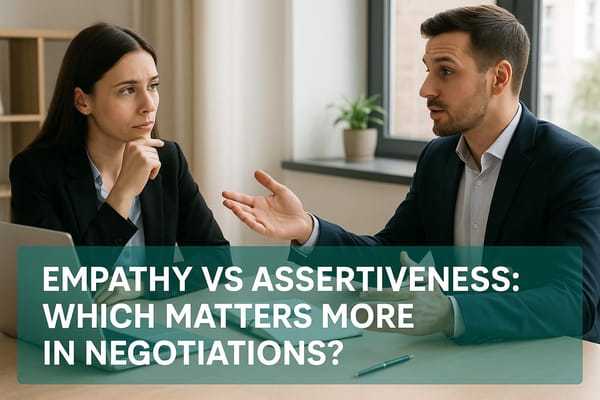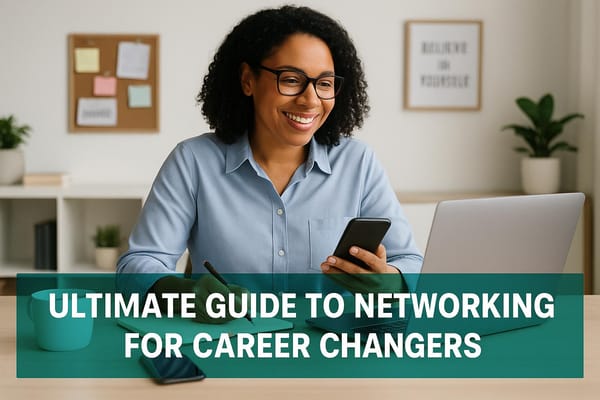10 Tips for Dressing for Global Job Interviews
Master global job interviews by dressing appropriately for cultural norms and professional expectations to make a lasting impression.

Your outfit can make or break your first impression in a job interview. Dressing professionally while respecting cultural norms is essential, especially for global roles. Here's what you need to know:
- Research Company Standards: Check their website, social media, or ask HR to understand their dress code.
- Consider Regional Norms: Colors, styles, and business attire vary by region. For example, navy blue is safe in the West but avoid white in East Asia (linked to mourning).
- Respect Modesty & Religious Practices: Cover shoulders and knees in the Middle East, and avoid flashy accessories globally.
- Dress for the Weather: Use breathable fabrics for hot climates (linen, cotton) and layer smartly in cold regions.
- Keep Accessories & Grooming Simple: Minimal jewelry, polished shoes, and professional hairstyles are universally appreciated.
Quick Overview of Regional Preferences
| Region | Safe Attire | Avoid These |
|---|---|---|
| North America | Business casual to formal | Overly casual outfits |
| East Asia | Formal suits, minimal style | Bright colors, flashy accessories |
| Middle East | Conservative, modest wear | Tight or revealing clothing |
| South Asia | Climate-friendly formal | All-black outfits |
When in doubt, choose conservative options like a tailored suit in neutral colors. Looking polished and culturally aware ensures you leave a positive impression.
Dressing Culture for an Interview - Tips
1. Check Company Dress Standards
Before your interview, take some time to understand how employees typically dress at the company. You can get clues by exploring their online presence and digital profiles.
Here are a few key platforms to check:
| Platform | What to Look For | Why It Matters |
|---|---|---|
| Company Website | Team photos on the "About Us" page | Gives a glimpse of daily attire |
| Employee profile pictures | Highlights professional dress standards | |
| Instagram/Facebook | Event photos and office culture posts | Shows whether the vibe is casual or formal |
Pay close attention to visuals of employees in similar roles. Photos from team events, meetings, office tours, or employee features can help you figure out the usual dress code.
If the company operates in multiple locations, keep in mind that dress expectations might vary by office. When in doubt, go with polished and professional business attire to cover a range of workplace norms .
2. Know Color Meanings by Region
The colors you wear can influence how you're perceived, and these perceptions vary worldwide. What works in one country might send the wrong message in another. A 2023 CareerBuilder study highlighted that blue and black are popular choices in Western countries, though their significance changes across cultures .
Here’s a quick breakdown of color preferences and taboos by region:
| Region | Safe Colors | Colors to Avoid | Cultural Context |
|---|---|---|---|
| Western | Navy Blue, Gray, Black | All-red outfits | Blue conveys professionalism and trust . |
| East Asia | Dark Blue, Gray | White, Green | White is linked to mourning; green can be offensive in China . |
| Middle East | Navy, Brown | Orange | Orange is associated with mourning . |
| South Asia | Blue, Brown | All-black outfits | Black can symbolize anger or evil . |
Here are some quick tips for choosing interview colors:
- Navy Blue: Known for projecting control, calmness, and trust .
- Gray: > "Gray signifies sophistication and is a common option for interviews" .
- Accent Colors: Red can convey energy and power but should be used sparingly .
While global trends influence perceptions, traditional color meanings still play a key role in formal settings. When unsure, research the company’s culture and stick to conservative choices.
3. Match Local Business Dress Codes
Understanding local dress codes is key to making a strong impression in global settings. Dress expectations can vary widely depending on the region, industry, and even individual companies. Here's a quick breakdown of how standards differ across major regions:
| Region | Standard Interview Attire | Industry Variations | Key Considerations |
|---|---|---|---|
| North America | Business casual to formal | Tech: Smart casual acceptable | Varies by city and weather |
| East Asia | Formal suits preferred | Finance: Always formal suits | Minimal accessories, closed-toe shoes |
| Europe | Conservative business wear | Creative: Business casual accepted | Formality depends on industry |
| South Asia | Business formal; linen in summer | Tech: Smart casual acceptable | Climate-friendly materials |
| Australia | Business casual common | Finance/Law: Full suits required | Leather shoes are a must |
Dress expectations can shift even within regions. For instance, Japan allows more relaxed attire during summer months (except in finance), while China and Russia stick to strict formal standards . Meanwhile, tech hubs like Silicon Valley have introduced a more relaxed "smart casual" norm, but a polished look is still important .
"Showing up to an interview polished and dressed appropriately for the role you are interviewing for shows that you put effort into yourself and into understanding the organization's culture." - Heather Tranen, founder of Schtick
When in doubt, aim for formal attire. It's better to be slightly overdressed - you can always adjust by removing a layer, but you can't add formality once you're there. Balancing cultural nuances with your industry's expectations will help you project a professional image wherever you go.
4. Respect Religious Dress Guidelines
When preparing for global interviews, it's crucial to understand and respect religious dress customs. These expectations often vary by region, influenced by local cultural norms and legal regulations.
| Region | Key Points | Legal Framework | Requirements |
|---|---|---|---|
| France | Secular workplace focus | 2010 law prohibits facial coverings in public | Restrictions on visible religious attire |
| Saudi Arabia | Shifting dress practices | Recent reforms | Gender segregation still observed |
| Germany | Emphasis on neutrality | Case-by-case under constitutional guidelines | Evaluated individually |
| Turkey | Mixed stance on religious attire | Partial reforms | Limited use of religious attire in public roles |
In the U.S., religious dress is legally protected. The Equal Employment Opportunity Commission (EEOC) requires employers to accommodate religious attire unless it causes undue hardship . However, international regulations can differ significantly.
To align with local religious expectations, consider these steps:
- Research the religious and cultural dress norms of the country you're targeting.
- Check company policies regarding religious attire to ensure compliance.
- Opt for conservative choices that demonstrate respect for local customs.
"It is advisable in all instances for employers to make a case-by-case determination of any requested religious exceptions, and to train managers accordingly." - U.S. Equal Employment Opportunity Commission
Many organizations now outline dress code policies that include provisions for religious attire. While customer preferences cannot legally justify discrimination , understanding and respecting local cultural norms is key to making a strong first impression.
5. Dress for the Weather
Dressing appropriately for the weather not only keeps you comfortable but also ensures you maintain a polished appearance. Your choice of fabrics and layers can make all the difference in how you present yourself, especially in varying climates.
| Climate Type | Recommended Fabrics | What to Avoid |
|---|---|---|
| Hot & Humid | Linen, cotton, linen-cotton blends | Polyester, nylon, acrylic |
| Cold & Winter | Wool, cashmere, natural fiber blends | Heavy synthetic materials |
| Variable Weather | Breathable layers, moisture-wicking base layers | Bulky or non-removable pieces |
Fabric and layering choices are just as important as color and style. For winter interviews, consider layering strategically: start with a moisture-wicking base, add a warm mid-layer, and finish with a professional outer layer like a wool sweater or a fitted blazer over a cotton shirt .
In hot climates, such as the Gulf region, opt for light-colored, natural fabrics to stay cool and comfortable. Cotton and linen are excellent choices - linen, in particular, stands out for its ability to wick moisture, resist odors, and allow airflow .
Here are a few practical tips to keep in mind:
- Carry formal shoes if navigating snowy conditions .
- Stick to lightweight, breathable fabrics for summer interviews .
- Be aware that indoor office temperatures might feel very different from outdoor conditions.
Nervous energy from an interview can also affect your body temperature, so breathable materials can help you stay cool and composed. Accessories, like a scarf or a professional bag, can also enhance your weather-appropriate outfit while adding a touch of style.
6. Keep Accessories Simple
When choosing accessories for a global interview, focus on complementing your professional look without drawing too much attention. Accessories, just like your attire, should respect local cultural expectations and maintain a polished, understated style.
Here's a quick guide for selecting accessories in global interview settings:
| Accessory Type | Recommended Choices | What to Avoid |
|---|---|---|
| Jewelry | Simple studs, pearl earrings, thin chains | Dangling earrings, multiple rings, noisy bangles |
| Watches | Classic analog designs, leather or metal bands | Smartwatches, bright colors, oversized faces |
| Bags/Briefcases | Structured leather bags, classic portfolios | Backpacks, loud patterns, designer logos |
| Scarves/Ties | Solid colors, subtle patterns | Bold prints, political symbols, religious imagery |
"Keep your style subtle and choose pieces that will enhance your look, not distract from it." - Jazmin Aguilar, Social Media and Events Coordinator at Robbins Brothers
Here are some tips to keep in mind:
- Research the cultural norms of the region you're interviewing for to ensure your accessory choices align with expectations.
- Consider the company's environment - traditional workplaces often favor minimal jewelry and classic styles.
- Stick to 2-3 subtle pieces to maintain a clean and professional look.
For both virtual and in-person interviews, ensure your accessories are clean and properly secured. These small details showcase your professionalism and respect for cultural nuances, leaving a positive impression.
7. Follow Local Grooming Rules
Grooming expectations can differ significantly across cultures, and aligning with these standards demonstrates professionalism. Just like dressing appropriately, grooming plays a subtle but important role in showing cultural awareness during global job interviews.
| Region | Hair Standards | Facial Hair | Additional Considerations |
|---|---|---|---|
| North America | Natural colors, conservative styles | Well-maintained or clean-shaven | Minimal fragrance, clean nails |
| East Asia | Natural black or brown, neatly styled | Clean-shaven preferred | Neat nails, minimal fragrance |
| Middle East | Women may need to cover hair in some countries | Neat, well-trimmed beards acceptable | Trimmed nails, neat appearance |
| Europe | Professional cuts, natural colors | Well-groomed facial hair acceptable | Minimal fragrance, clean nails |
Here’s how to ensure your grooming aligns with these standards:
- Hair Maintenance: Keep your hair clean, styled neatly, and in natural colors. Research local customs to ensure your look fits the setting.
- Facial Hair: Opt for a clean-shaven look or keep facial hair neatly trimmed, especially in more conservative environments. Always check company-specific policies.
- Personal Hygiene: Ensure your nails are clean and trimmed, and avoid heavy fragrances.
These tips are just as important for virtual interviews. High-definition cameras can pick up small details, so maintaining a polished appearance is essential. If you’re unsure about specific expectations, reach out to your recruiter for advice on both company and cultural norms.
Attention to grooming has often been a deciding factor for candidates securing roles in global companies, particularly in client-facing or leadership positions.
8. Pick Business-Appropriate Shoes
Your choice of footwear plays a key role in completing a polished, professional appearance. Different industries and regions have specific expectations when it comes to shoes, so it’s essential to align your selection with these standards.
Here’s a quick guide to industry-specific footwear preferences:
| Dress Code | Recommended Footwear | Industries/Regions |
|---|---|---|
| Business Formal | Black Oxford shoes, classic leather pumps | Banking, Law, Corporate (North America, Europe) |
| Business Professional | Derby shoes, monk straps, closed-toe heels | Finance, Consulting (Asia, Middle East) |
| Business Casual | Leather loafers, Chelsea boots, conservative flats | Tech, Creative (West Coast US, Northern Europe) |
Key Considerations for Choosing Shoes
Color Selection
Stick to neutral tones like black, navy, or charcoal gray for a serious, professional look. In creative industries, deeper shades like burgundy or dark blue can add a stylish touch without compromising professionalism.
Regional Preferences
- North America: Conservative leather shoes are a staple in corporate settings.
- East Asia: Polished and minimalist designs are the norm.
- Europe: High-quality craftsmanship and timeless styles are highly valued.
- Middle East: Closed-toe shoes are a must in most professional contexts.
Style Guidelines
- Opt for moderate heel heights.
- Solid colors are generally more professional than patterns.
- Comfort is key - choose shoes you can walk in confidently.
- Always keep your shoes clean and in good condition.
"Keep in mind, footwear should always be clean and in good condition, no matter how dressy the office setting. Scuffs, dirt and holes won't elevate your outfit or make you look very professional."
9. Meet Modesty Requirements
Dressing appropriately for an interview goes beyond looking professional - it’s about respecting local customs and modesty standards. Different regions have their own expectations for attire, and understanding these can make a big difference in how you're perceived.
Regional Modesty Guidelines
| Region | Key Modesty Requirements | Professional Attire Tips |
|---|---|---|
| Middle East | Cover shoulders, knees, and sometimes hair | Conservative suits, longer skirts/dresses, loose-fitting clothing |
| East Asia | Avoid exposed toes, opt for conservative necklines | Traditional business suits, closed-toe shoes |
| Western Countries | Business professional with some flexibility | Standard suits, knee-length skirts, traditional business wear |
Practical Tips for Specific Regions
Middle Eastern Standards
In the Middle East, modesty is taken seriously. For instance, in Saudi Arabia, professional clothing should be loose and cover most of the body. While the UAE offers slightly more flexibility, conservative business attire is still the norm, especially during interviews.
Asian Business Culture
In many Asian countries, traditional business attire is key. Details matter - closed-toe shoes are essential, as showing toes in formal settings is often considered inappropriate.
Simple and Practical Adjustments
- Bring a neutral-colored scarf to use as a head or shoulder covering if needed.
- Choose clothing that fits well but isn’t tight or revealing.
- Opt for professional fabrics that are both comfortable and modest.
"Wearing appropriate clothing is more than rules; it's respect for the Middle Eastern people and their culture."
- MD Hafijul Islam, Founder, sunaan.com
Cultural Variations
Even within regions, modesty standards can differ. For example, Lebanon tends to have more relaxed dress codes compared to other Middle Eastern countries, while Qatar leans more toward Western styles than Saudi Arabia.
Why It Matters
As highlighted earlier:
"Your outfit can tell a story about who you are before you even utter a single word... Dressing modestly and appropriately shows respect for the interviewer and the company, creating a positive first impression."
Taking the time to research local customs and company culture before an international interview shows that you’re thoughtful and culturally aware - qualities that global employers value highly.
10. Choose Conservative Options
When attending global interviews and the dress code is unclear, conservative attire is usually your safest bet. It shows professionalism and helps you avoid any potential cultural missteps, even when you're unsure of local norms.
Guidelines for Conservative Attire
| Gender | Core Pieces | Colors | Accessories |
|---|---|---|---|
| Men | Well-tailored suit, long-sleeve button-up shirt | Navy, gray, black | Simple tie, matching belt and shoes |
| Women | Pantsuit or skirt suit, formal blouse | Navy, gray, black | Minimal jewelry, closed-toe shoes |
Professional Wardrobe Tips
For women, a polished blazer and pencil skirt combination paired with a silk blouse in shades like emerald or amethyst can exude professionalism. Neutral heels under 3 inches are ideal for formal settings.
For men, a classic navy or charcoal suit is a reliable choice that works well across various business cultures. Pair it with a crisp white or light blue shirt to complete the look.
Choosing the Right Colors
Stick to traditional business colors for a professional appearance. Jewel tones or pale neutrals work well for blouses and accessories, while suits should remain in classic tones like navy, gray, or black. These colors are timeless and universally respected in professional settings.
"When dressing for work I have two goals: 1) not to create a negative perception that I have to overcome, and 2) to project that I belong in that room and in that role. And those two things are never more important than in a conservative work environment." - Belle, Capitol Hill Style
Finishing Touches for a Polished Look
Complete your conservative outfit with these key details:
- Clothing should be clean, pressed, and properly fitted
- Opt for minimal, elegant jewelry
- Avoid strong fragrances
- Ensure shoes are polished and in good condition
Conservative attire doesn't have to be boring - it reflects timeless professionalism and respect for cultural norms. If you're unsure about the company's dress code, being slightly overdressed is usually better than being underdressed . For added confidence, research the company's policies or ask HR for guidance . These steps can help you make a strong first impression.
Conclusion
Global job interviews require careful attention to cultural norms and professional expectations. Studies indicate that following local dress standards can make a strong first impression and help avoid common mistakes . Whether it’s adhering to specific dress codes or keeping accessories simple, every detail plays a role.
Respecting local dress codes showcases your understanding of cultural norms and professionalism.
"In essence, your wardrobe choices can open doors or create barriers. With a little preparation and awareness, you can navigate these cultural landscapes confidently. Embracing local customs not only shows respect but also enhances your journey, allowing for genuine connections with the people and places you encounter." - Zoey Peregrine
Here are some practical tips to put these insights into action:
| Aspect | Action Items | Benefits |
|---|---|---|
| Research | Learn about company culture and customs | Displays respect and preparation |
| Consultation | Ask HR about dress code expectations | Ensures you're aligned with norms |
| Preparation | Test your outfit a day in advance | Gives time to make necessary tweaks |
| Cultural Sensitivity | Account for religious and regional norms | Reflects awareness and adaptability |
"You want to look like you want the job"
If you need extra help preparing for your job search, consider using tools like scale.jobs (https://scale.jobs). They provide affordable virtual assistant services and free job search tools, including a resume ATS checker, cover letter generator, and application tracker. These resources can simplify your process, allowing you to focus on nailing your interview.




